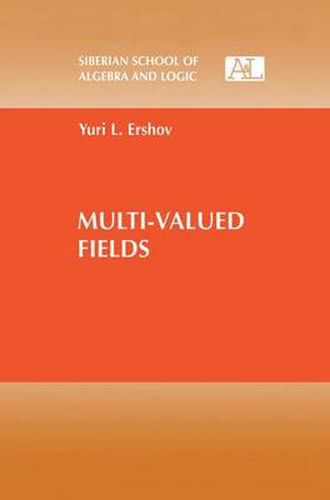Readings Newsletter
Become a Readings Member to make your shopping experience even easier.
Sign in or sign up for free!
You’re not far away from qualifying for FREE standard shipping within Australia
You’ve qualified for FREE standard shipping within Australia
The cart is loading…






This title is printed to order. This book may have been self-published. If so, we cannot guarantee the quality of the content. In the main most books will have gone through the editing process however some may not. We therefore suggest that you be aware of this before ordering this book. If in doubt check either the author or publisher’s details as we are unable to accept any returns unless they are faulty. Please contact us if you have any questions.
For more than 30 years, the author has studied the model-theoretic aspects of the theory of valued fields and multi-valued fields. Many of the key results included in this book were obtained by the author whilst preparing the manuscript. Thus the unique overview of the theory, as developed in the book, has been previously unavailable.
The book deals with the theory of valued fields and mutli-valued fields. The theory of Prufer rings is discussed from the “geometric’ point of view. The author shows that by introducing the Zariski topology on families of valuation rings, it is possible to distinguish two important subfamilies of Prufer rings that correspond to Boolean and near Boolean families of valuation rings. Also, algebraic and model-theoretic properties of multi-valued fields with near Boolean families of valuation rings satisfying the local-global principle are studied. It is important that this principle is elementary, i.e., it can be expressed in the language of predicate calculus. The most important results obtained in the book include a criterion for the elementarity of an embedding of a multi-valued field and a criterion for the elementary equivalence for multi-valued fields from the class defined by the additional natural elementary conditions (absolute unramification, maximality and almost continuity of local elementary properties). The book concludes with a brief chapter discussing the bibliographic references available on the material presented, and a short history of the major developments within the field.
$9.00 standard shipping within Australia
FREE standard shipping within Australia for orders over $100.00
Express & International shipping calculated at checkout
This title is printed to order. This book may have been self-published. If so, we cannot guarantee the quality of the content. In the main most books will have gone through the editing process however some may not. We therefore suggest that you be aware of this before ordering this book. If in doubt check either the author or publisher’s details as we are unable to accept any returns unless they are faulty. Please contact us if you have any questions.
For more than 30 years, the author has studied the model-theoretic aspects of the theory of valued fields and multi-valued fields. Many of the key results included in this book were obtained by the author whilst preparing the manuscript. Thus the unique overview of the theory, as developed in the book, has been previously unavailable.
The book deals with the theory of valued fields and mutli-valued fields. The theory of Prufer rings is discussed from the “geometric’ point of view. The author shows that by introducing the Zariski topology on families of valuation rings, it is possible to distinguish two important subfamilies of Prufer rings that correspond to Boolean and near Boolean families of valuation rings. Also, algebraic and model-theoretic properties of multi-valued fields with near Boolean families of valuation rings satisfying the local-global principle are studied. It is important that this principle is elementary, i.e., it can be expressed in the language of predicate calculus. The most important results obtained in the book include a criterion for the elementarity of an embedding of a multi-valued field and a criterion for the elementary equivalence for multi-valued fields from the class defined by the additional natural elementary conditions (absolute unramification, maximality and almost continuity of local elementary properties). The book concludes with a brief chapter discussing the bibliographic references available on the material presented, and a short history of the major developments within the field.